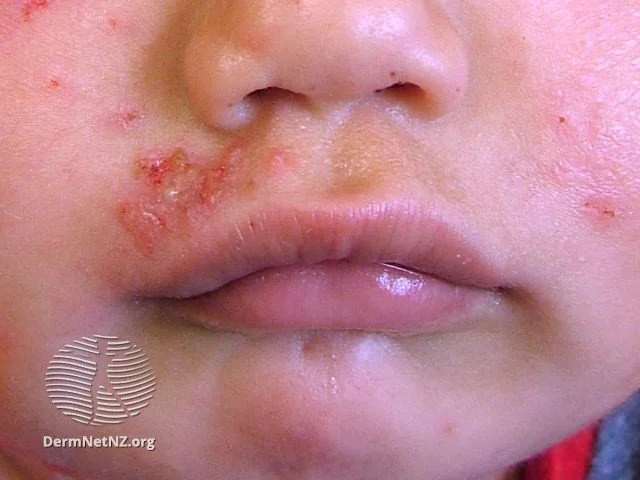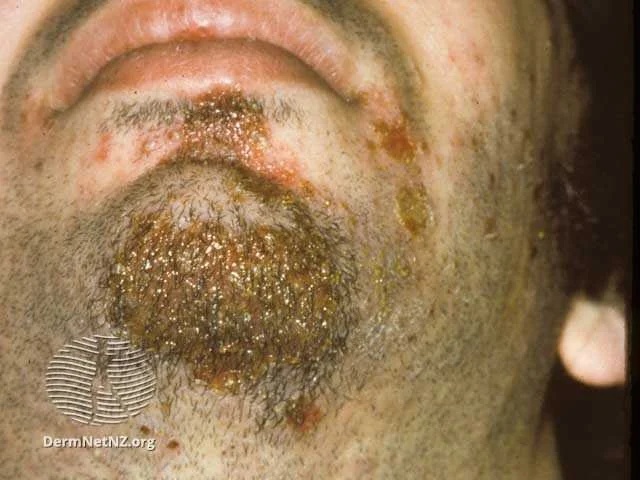
Impetigo
Impetigo, a superficial skin infection, looks like honey-colored crusting with oozing and weeping, often around the nose or mouth.
Credit: DermNet NZ
What is impetigo?
Impetigo is a prevalent bacterial skin infection that affects the superficial layers of the skin. It presents as small pus-filled blisters and yellowish crusts, typically on the face, arms, or legs. These blisters can be itchy and sometimes painful. In some cases, larger blisters may appear.
What causes impetigo?
Impetigo is primarily caused by two types of bacteria: Staphylococcus aureus and Streptococcus pyogenes. While children are commonly affected, adults can also contract impetigo, especially if their immune system is compromised. Some risk factors include:
What are the symptoms of impetigo?
Impetigo usually starts as a red patch or sore near the nose or mouth. This sore leaks fluid and eventually forms a honey-colored crust. The condition can be itchy and predominantly affects exposed areas like the face and hands. In some instances, painless, fluid-filled blisters appear on reddened and itchy skin. Affected areas may also have swollen lymph nodes.
How do I treat impetigo?
Treatment for impetigo typically involves topical or oral antibiotics. Mupirocin ointment is beneficial for less severe cases. In addition to antibiotics, topical antiseptics like povidone-iodine, hydrogen peroxide, or chlorhexidine may be used. For more severe presentations, oral antibiotics such as amoxicillin, cephalexin, or sulfamethoxazole/trimethoprim may be prescribed. A bacterial culture might be recommended to identify the specific causative agent.
How do I prevent impetigo?
To reduce the risk of recurrent impetigo or its spread to others, consider the following preventive measures:
Apply antibiotic or antiseptic ointment to the nostrils
Bathe daily using antibacterial soap
Maintain short, clean nails
Avoid close contact with infected individuals
Children should return to school 24 hours post the commencement of antibiotics, ensuring their lesions are adequately covered
Use individualized towels and washcloths
Impetigo can cause severe blistering in some cases.
Credit: DermNet NZ
Honey-colored crusting of impetigo, as seen here, is very typical.
Credit: DermNet NZ



